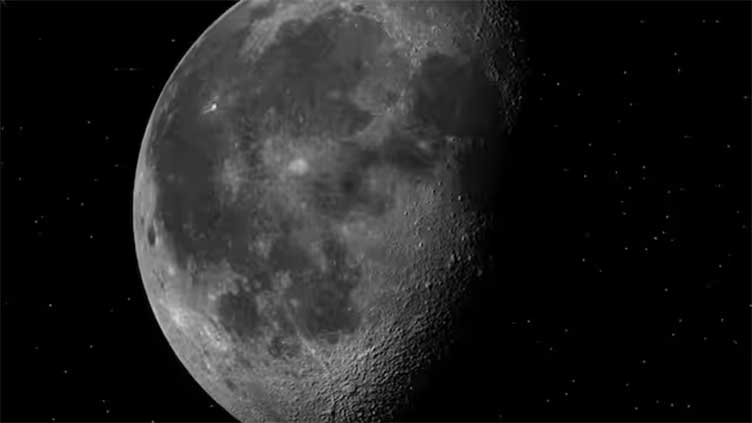Scientists find underground cave on Moon

Technology
They believe that such caves could house future astronauts
(Web Desk) - Scientists have confirmed a cave on the Moon and suspect that there are hundreds more.
They believe that such caves could house future astronauts. The one confirmed is quite close to the region where Neil Armstrong and Buzz Aldrin landed in 1969
The cave is said to be reachable from an open pit in the Mare Tranquillitatis (Sea of Tranquility). As it is accessible from the surface, it has made the spot a prime location to build a future lunar base. It would serve as a natural shelter against the difficult lunar environment.
Leonardo Carrer, the study's first author, said, "The main advantage of caves is that they make available the main structural parts of a possible human base without requiring complex construction activities."
The latest research published in Nature Astronomy titled, "Radar evidence of an accessible cave conduit on the Moon below the Mare Tranquillitatis pit", made this milestone discovery about the Moon and future lunar explorations.
The research, which is a result of an international collaboration, was published on Monday (Jul 15). Scientists for the first time have found evidence of a substantial underground cave on the Moon. Researchers suspect that the cave is an empty lava tube.
The study was partially funded by the Italian Space Agency. It also involved researchers of the University of Padua and La Venta Geographic Explorations APS.
The researchers contributed to the geological analyses and the modelling of the identified conduit.
NASA's lunar reconnaissance orbiter (LRO) radar data analysis showed that the Mare Tranquillitatis pit, the Moon's deepest known pit, leads to a cave that is up to 80 metres long and 45 metres wide. The cave lies about 150 metres beneath the surface.
As quoted in reports, Lorenzo Bruzzone, professor at the University of Trento, explained: "These caves have been theorized for over 50 years, but it is the first time ever that we have demonstrated their existence."
Explaining further, Bruzzone said, "In 2010, as part of the ongoing LRO NASA mission, the Miniature Radio-Frequency (Mini-RF) instrument acquired data that included a pit in Mare Tranquilitatis."
"Years later we have reanalyzed these data with complex signal processing techniques we have recently developed, and have discovered radar reflections from the area of the pit that are best explained by an underground cave conduit," he added.
The scientist said that the "discovery provides the first direct evidence of an accessible lava tube under the surface of the Moon".



